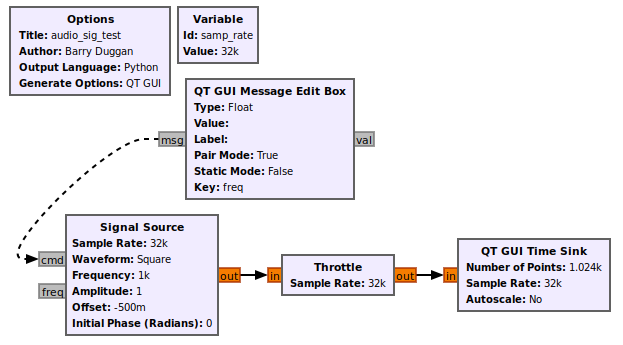Throttle
Throttle flow of samples such that the average rate does not exceed the specific rate (in samples per second).
A throttle block should be used if and only if your flowgraph includes no rate limiting block, which is typically hardware (e.g., an SDR, speaker, microphone). It is not intended nor effective at precisely controlling the rate of samples. That should be controlled by a source or sink tied to sample clock. E.g., a USRP or audio card.
The Throttle Block is typically attached directly to the output of a non-hardware source block (e.g. Signal Source), in order to limit the rate at which that source block creates samples.
Parameters
(R): Run-time adjustable
- Type
- Data type of the block can be complex, float, int, short or byte. Default value is complex.
- Sample rate(R)
- Maximum average sample rate desired.
- Vec length
Default value = 1
- Ignore rx_rate tag
- If set to False, the block will set its sample rate to the value of recieved tags with the key rx_rate. It will ignore other tags.
Example Flowgraph
In this example flowgraph, if you remove the Throttle block, the output will look the same, but your CPU will be at 100% and GNU Radio might crash.
Source Files
- C++ files
- Here
- Header files
- Here
- Public header files
- Here
- Block definition
- Yaml
